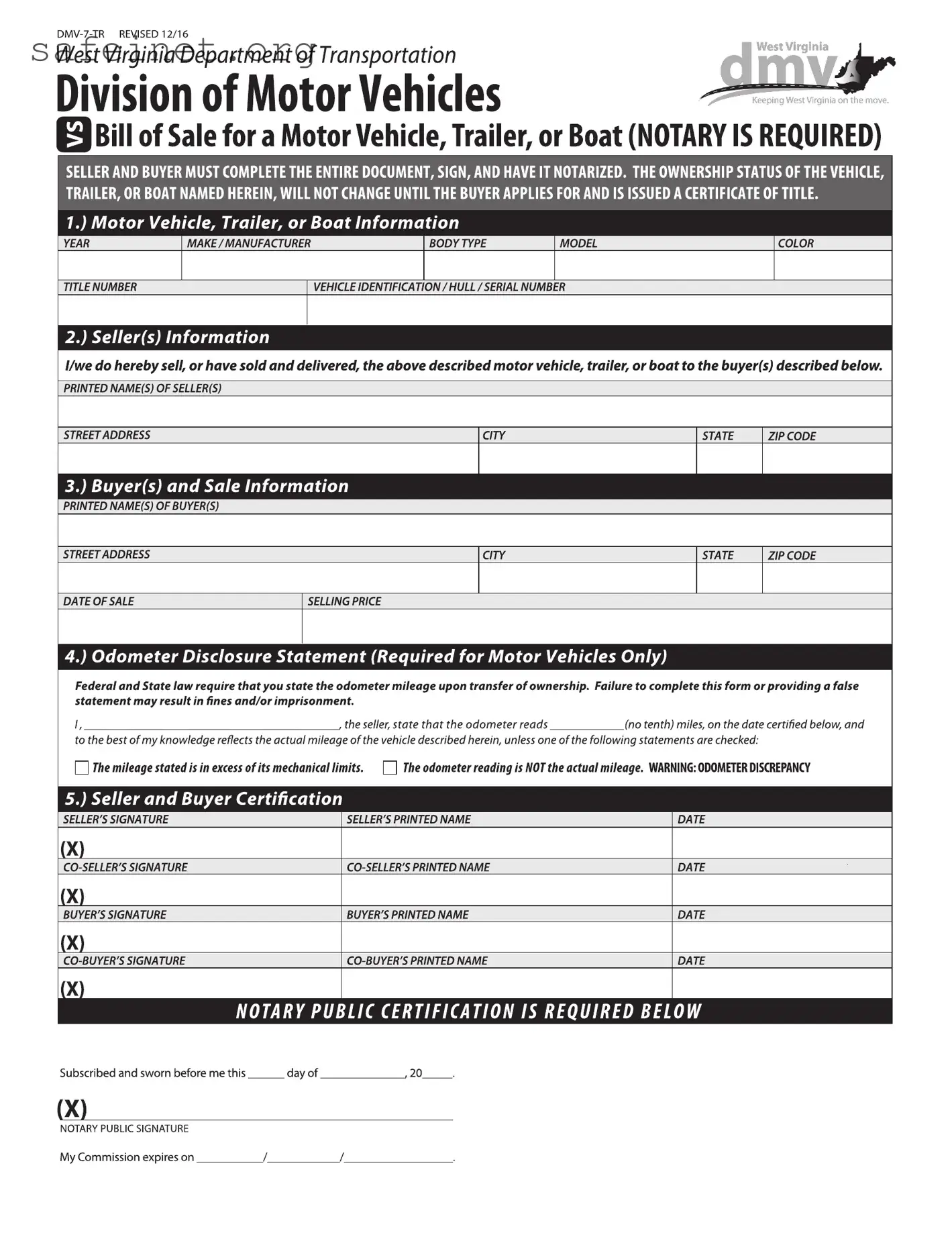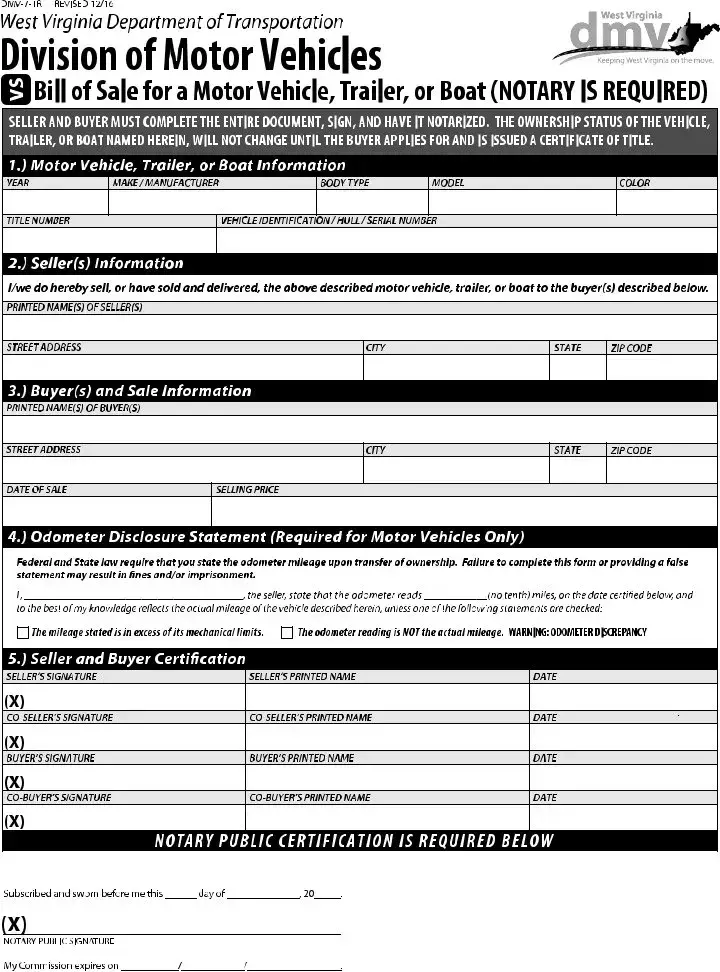What is the BOS DMV-7-TR form?
The BOS DMV-7-TR form is a document used in certain states to report the transfer of a vehicle's title. Typically, it is required when a vehicle is sold, donated, or changes ownership for any reason. This form helps ensure that the vehicle registration and title records are updated accurately and reflect the current owner.
Who needs to fill out the BOS DMV-7-TR form?
Any individual or entity involved in the transfer of a vehicle's title should complete this form. This includes sellers, buyers, and any intermediaries, such as dealerships. Properly filling out and submitting the form is crucial to legally recording the transfer of ownership.
Where can I obtain the BOS DMV-7-TR form?
The BOS DMV-7-TR form can typically be obtained from the Department of Motor Vehicles (DMV) website or local DMV office. Some states may also provide the form through their online services, allowing for easier access and quicker submission.
What information do I need to provide on the form?
On the BOS DMV-7-TR form, you will need to provide details such as the vehicle’s identification number (VIN), make, model, year, and the odometer reading at the time of transfer. Both the seller and buyer must also provide their names, addresses, and signatures, ensuring that all information is accurate and complete.
How do I submit the BOS DMV-7-TR form?
Submission methods for the BOS DMV-7-TR form can vary by state. Generally, you can submit it in person at your local DMV office or via mail. Some states may offer online submission options as well. Be sure to check your state’s DMV website for specific instructions regarding submission methods.
Is there a fee associated with submitting the BOS DMV-7-TR form?
Fees may apply when submitting the BOS DMV-7-TR form, though this varies by state and the specific circumstances of the vehicle transfer. Often, any associated fees are collected when the new owner registers the vehicle in their name. Check with your local DMV for precise information on potential fees.
What happens if I do not submit the BOS DMV-7-TR form?
Failure to submit the BOS DMV-7-TR form can lead to complications. The transfer of ownership may not be legally recognized, leaving the previous owner liable for any issues related to the vehicle. Additionally, the new owner may face difficulties in registering the vehicle or obtaining insurance if the title transfer isn’t properly documented.
Can I submit the form if I lost it?
If you lost the BOS DMV-7-TR form, you may need to obtain a new copy from your local DMV or their website. It's essential to fill out the form accurately once again and submit it, as submitting an incomplete or incorrect form could lead to delays in the transfer process.
How long does it take for the BOS DMV-7-TR form to be processed?
The processing time for the BOS DMV-7-TR form can vary depending on the state and whether you submitted it online, by mail, or in person. Typically, processing may take anywhere from a few days to several weeks. To get the most accurate timeframe, consult your local DMV.
Do I need to keep a copy of the BOS DMV-7-TR form?
Yes, it is advisable to keep a copy of the completed BOS DMV-7-TR form for your records. This can be useful for any future reference regarding the ownership of the vehicle and serves as a legal document in case disputes arise.

